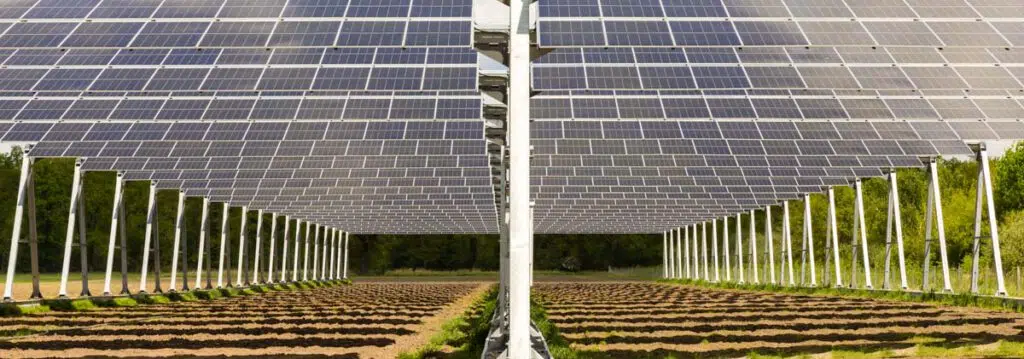The Solar and Agricultural Symbiosis
Solar energy and agriculture are forging a promising alliance with the advent of agrivoltaic technology. This innovative concept is gaining traction among farmers who see its potential to harvest solar power without sacrificing their precious land. Agrivoltaics dismisses criticisms about solar arrays usurping farmland by proving that these two activities can coexist harmoniously.
Agrivoltaics: The Fusion of Farming and Solar Panels
How Agrivoltaics Work
Agrivoltaics is more than a buzzword—it’s an evolving field where agriculture meets solar technology. This practice pairs solar panels with suitable crops that thrive in the dappled shade, yielding multiple benefits like increased crop production, water conservation, and soil preservation.
Evolution of Agrivoltaic Practices
Initially, solar panels were installed low to the ground to cut costs; now, with more affordable solar tech, we’re witnessing a focus on biodiversity. These pollinator-friendly solar havens now double as conservation spaces, enhancing the local ecosystem significantly. Contemporary agrivoltaics go a step further by elevating solar panels, ensuring farming can thrive beneath them.
National Support for Agrivoltaics
U.S. policymakers and federal agencies are backing this integration by opening avenues for upcoming farmers and proposing legislation that encourages dual land use for solar energy and agriculture. This approach is also facilitating the discovery of unique crops ideally suited for agrivoltaic systems.
AgroSolar Europe: A Pioneering Approach to Agrivoltaic Design
The Aesthetic Argument in Solar Farms
While the opposition may criticize the visual impact of solar farms, it’s worth noting that modern agricultural practices are no strangers to significantly altering landscapes. Yet there is always scope for improvement, and that’s precisely where AgroSolar Europe sees an opportunity—with bio-based materials to enhance solar array visuals considerably.
Introducing Bio-Based Structures
Partnering with FibR GmbH, AgroSolar Europe proposes replacing conventional metal racking with flax, hemp, and wood fiber structures. This sustainable initiative is expected not only to have a reduced environmental footprint but also to blend seamlessly into natural settings. It’s a game-changer for the industry, Marrying functionality with eco-friendliness effortlessly.
The Strength in Lightweight Materials
These groundbreaking solutions might seem fragile, yet they stand their ground with exceptional durability and significantly reduced material usage. Optimized for simple installation, this new design also minimizes soil compaction, a boon for preserving land integrity.
Enhancing Biodiversity with Agrivoltaics
AgroSolar Europe’s vision encompasses more than just the immediate utility; they anticipate an increase in local biodiversity. The organic structures can offer shelter to birds and insects and support climbing plants.
The Future is Bright: Solar Power Meets Agri-Robots
Agrivoltaics Spreading Across Europe
AgroSolar Europe’s initiative is slated to begin distribution across the continent by 2026, pioneering a movement towards integrating agriculture with solar energy.
Solar-Powered Robotics in Agriculture
As we witness bio-based agrivoltaic technologies flourish in Europe, the U.S. isn’t far behind with its advances in solar-powered agricultural robots. Aigen‘s solar weeding system and Mineral’s autonomous agri-rovers are just some examples of how solar power can innovate farming practices.
Thus, agrivoltaics represents a powerful synergy, promising a future where farming and solar energy coalesce to create a sustainable and efficient agricultural landscape. Fostering this blend of technology and nature could be the key to addressing not only the energy needs of tomorrow but also the pressing concerns of food production and land conservation.
